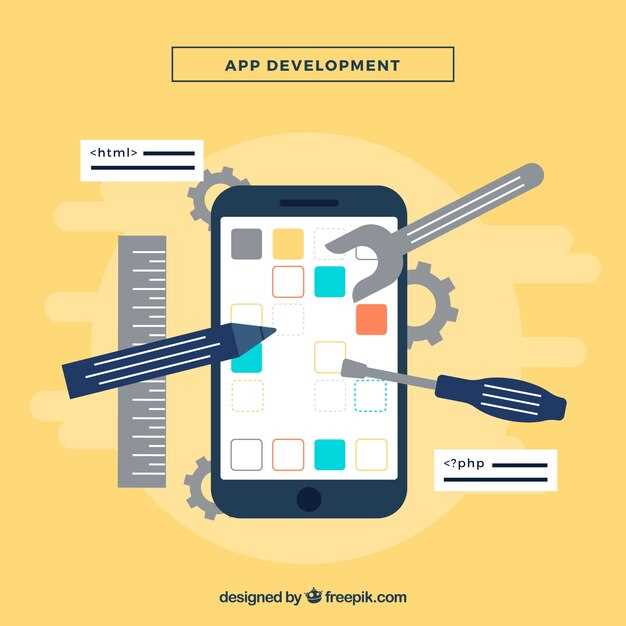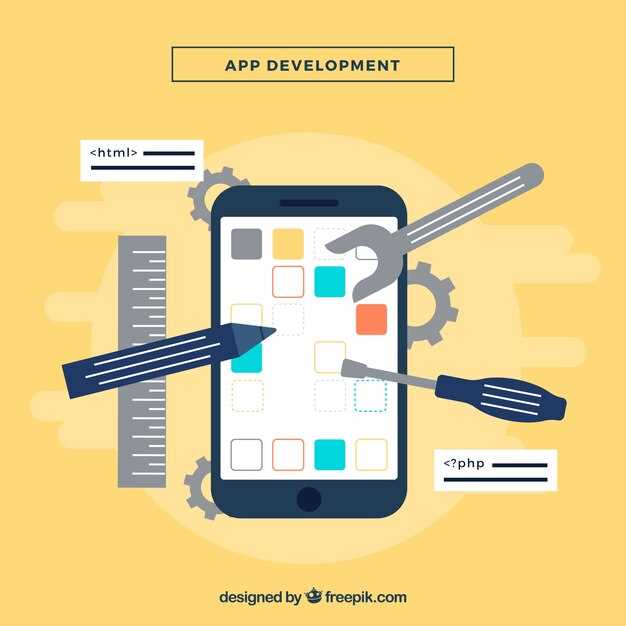Transformation is well underway in the realm of software solutions. High demand for interactive platforms drives constant evolution. More advanced functionalities, captivating designs, and smoother user experiences arise daily. As consumer preferences shift, innovators are forced to adapt continuously. The landscape is ripe with possibilities and challenges alike.
Remarkable advancements in tools empower developers to craft unique experiences. Consider intuitive interfaces, augmented realities, or even artificial intelligence integration. Each of these elements plays a crucial role in redefining interactions between users and digital environments. Indeed, staying abreast of these rapid advancements becomes essential for anyone invested in this sector.
With competition intensifying, standing out is vital for success. Many companies are now focused on ensuring that offerings meet ever-evolving user needs. In this dynamic context, understanding nuances of shifting paradigms not only helps in survival but also in thriving. Hence, recognizing critical tendencies can provide a significant advantage.
As fresh ideas emerge, traditional paradigms are challenged, revealing new paths ahead. Collaboration tools, cloud services, and data-centric approaches enable teams to iterate quickly. In addition, shifting focus towards sustainability may shape priorities moving forward. As a result, developers must remain flexible and forward-thinking to harness the full potential of these innovations.
The Future of Mobile App Development

Innovations are reshaping how applications are created and utilized. Advancements are changing user interactions, making them more intuitive. Different platforms now offer various opportunities. Change is constant, and developers need to adapt swiftly.
A variety of new functionalities is emerging to enhance user experience. From artificial intelligence to augmented reality, integration possibilities are expanding. These advancements not only improve performance but also offer unique features that attract users. As competition increases, businesses must embrace these changes to remain relevant in this dynamic landscape.
Cross-platform solutions are becoming increasingly popular. Developers enjoy the ability to write code once and deploy it on multiple systems. This approach significantly reduces development time. Ultimately, it allows for wider audience reach, maximizing potential revenues. New frameworks are simplifying this process, making it easier for teams to implement cutting-edge features efficiently.
Security measures have never been more crucial. As threats evolve, a proactive approach is essential. With heightened focus on user data protection, developers must prioritize encryption and privacy. Robust security features will not only build trust but also keep users engaged for longer periods.
As society shifts towards greater connectivity, applications must evolve to meet these demands. Users expect seamless integration with smart devices, wearables, and more. Such connectivity opens doors to endless possibilities while presenting challenges. Balancing innovation with functionality will be key as developers navigate this intricate landscape.
Ultimately, continuous learning and adaptation remain essential. Staying updated with trends ensures that developers can harness these advancements effectively. The road ahead is filled with excitement and potential. Embracing change will enable the creation of applications that redefine user experiences.
Emerging Technologies Shaping Mobile Experiences

Innovation in software creation is driving remarkable changes in user interactions. New paradigms are continually reshaping the landscape, offering unique possibilities. From augmented realities to advanced data processing, these developments captivate and enhance engagement. Users seek richer experiences, and technologies are rising to the occasion.
Smart algorithms personalize experiences like never before. Voice recognition systems are becoming integral, allowing for seamless navigation. Gamification techniques increase user retention, making applications more enjoyable. Connectivity improvements offer instantaneous responses and smoother interactions.
As immersive elements become mainstream, developers face new opportunities and challenges. Augmented and virtual realities demand a shift in design tradition, unlocking unparalleled user engagement. Innovative frameworks emerge, paving paths for creativity in crafting interfaces that resonate deeply with individuals.
| Technology | Description | Impact |
|---|---|---|
| Augmented Reality | Integrates digital content with real-world environments. | Enhances user engagement and interaction. |
| Artificial Intelligence | Enables smarter recommendations and automation. | Improves personalization and user satisfaction. |
| 5G Connectivity | Offers faster data transfer and reduced latency. | Supports high-quality media streaming and gaming. |
| Internet of Things | Connects devices for seamless integration. | Delivers smarter, coordinated experiences. |
These advancements point to a dynamic shift in user expectations, with possibilities extending beyond conventional boundaries. As we navigate this exciting terrain, staying attuned to innovations will be essential for creating impactful experiences.
Augmented Reality and Its Impact
Interaction between virtual elements and real-world environments signifies a significant shift in how users engage with their surroundings. This technology superimposes digital information onto physical spaces, creating an enriched experience. Imagine walking through a familiar area, yet seeing additional layers of data. Users can visualize information directly in front of them. Such immersive experiences captivate attention and foster greater immersion.
Recent advancements have accelerated its integration into various sectors. Gaming applications provide entertaining ways to interact with virtual characters. Retail environments enhance shopping experiences by allowing customers to see products in their spaces before purchasing. Education leverages this capability, enabling learners to visualize complex concepts.
| Industry | Application | Impact |
|---|---|---|
| Gaming | Interactive gameplay | Increased engagement and user retention |
| Retail | Virtual try-ons | Enhanced decision-making and customer satisfaction |
| Education | Visual learning tools | Improved comprehension and retention of information |
With such versatile applications, innovative possibilities appear boundless. Businesses recognize potential benefits, leading to increased investments in this technology. As tools for creating augmented experiences become more accessible, individuals anticipate competitive advantages. Both entrepreneurs and established companies are eager to explore uncharted territories. Thus, adapting strategies to incorporate these capabilities becomes essential for staying relevant.
Virtual Reality Applications in Daily Life
Immersive experiences have become an integral part of modern existence. Virtual environments offer unique opportunities for engagement, learning, and entertainment. They create exciting avenues for interaction that were previously unimaginable. As people navigate their routines, virtual reality serves as a powerful tool to enhance daily activities.
In various spheres of life, this technology breaks down barriers. Consider how education has transformed:
- Realistic simulations for complex subjects
- Virtual classrooms connecting students globally
- Interactive modules making learning more effective
Additionally, healthcare benefits significantly from VR integration. Patients can undergo therapeutic treatments using immersive techniques. This not only reduces anxiety but also enhances treatment adherence. In work environments, professionals train using simulated scenarios, honing skills without real-world consequences.
Leisure activities also see a remarkable shift. Many engage in immersive gaming experiences that surpass traditional formats. These games connect players in shared virtual spaces, offering social interaction. Fitness has taken on an innovative form as well:
- Workout routines incorporating virtual landscapes
- Real-time tracking of progress
- Group classes set in exciting digital environments
This growing trend indicates a shift in lifestyle. As technology continues to evolve, daily routines will likely embrace more virtual experiences. Whether through education, healthcare, or recreation, the potential for creativity is vast. Engaging with this technology offers transformative possibilities across various aspects of life. The boundaries between digital and physical worlds may become increasingly blurred.
Revolutionizing Interaction with IoT
Connected devices are reshaping how individuals interact daily. Smart gadgets communicate seamlessly, creating a web of information. Users find themselves engulfed in an interconnected ecosystem. This integration enhances convenience and fosters innovation.
As these devices become smarter, their interfaces evolve, making interactions more intuitive. Voice assistants, gesture controls, and other novel inputs are changing user experiences. Traditional touchscreens are becoming less prominent. In this dynamic landscape, adaptability is crucial.
Leveraging IoT capabilities, developers can create solutions that anticipate user needs. These advancements lead to personalized experiences, streamlining tasks effortlessly. By analyzing patterns, technology understands preferences and responds accordingly. Such interactions promise to redefine human-device relationships, balancing simplicity with sophistication.
Consequently, people engage with their environments in unprecedented ways, enhancing everyday life through seamless connectivity. As innovation progresses, the potential applications appear boundless, paving the way for a transformed interaction model.
AI-Powered Personalization in Apps
Today, creating tailored experiences for users is becoming increasingly crucial. With advancements in artificial intelligence, applications can now learn from user behavior. They adapt, evolve, and offer unique content to each individual. This shift towards customization enhances engagement and satisfaction.
Imagine a world where every interaction is meaningful. By harnessing data insights, apps identify patterns that inform preferences. Users receive recommendations that truly resonate. Consider personalized notifications, adaptive interfaces, and curated content feeds.
Moreover, the integration of AI transforms how brands communicate with their audiences. This technology not only tracks user actions but also predicts future needs and interests. It enables seamless adjustments, ensuring relevance throughout the user journey. As a result, consumer loyalty increases while marketing efforts become more efficient.
Ultimately, leveraging AI-driven personalization paves the way for deeper connections between brands and users. Embracing this innovative approach could redefine user expectations, fostering a more engaging digital environment. The combination of intelligent algorithms and user-centric design will propel interactions to unprecedented heights.
5G and Its Influence on Performance
Adoption of next-generation connectivity is transforming digital experiences dramatically. Speed, reliability, and responsiveness are now more critical than ever. Enhanced bandwidth capabilities are paving the way for richer applications. Users expect seamless interactions without interruptions. This new paradigm enables developers to rethink their strategies.
With recent advancements, the latency has reached unprecedented lows, allowing real-time data processing that opens up countless opportunities. Users can enjoy streaming, gaming, and other activities without frustrating lag times, creating a more engaging environment that captivates their attention effectively. The implications for industries relying on instant communication or remote control systems are profound.
Improved performance means that applications can handle larger volumes of data efficiently. This facilitates advanced features like augmented reality or virtual environments, previously limited by slower connections. An important aspect is the ability to connect numerous devices simultaneously without performance dips. Overall, this rapidly evolving landscape sets a new standard for expectations.
In addition, power consumption is often reduced in devices designed for 5G. Optimized energy use leads to longer-lasting hardware performance and user satisfaction. This is crucial for maintaining engagement in environments where frequent recharging isn’t feasible. As such, innovation thrives, enhancing user experiences continuously.
Ultimately, implications of this advanced technology go far beyond simple metrics. They redefine how developers approach design, user experience, and functionalities. The potential for enhanced interactivity and immersion adds a new depth not previously imagined. As obstacles fade, creativity can truly flourish, leading to groundbreaking applications that resonate with users globally.
Current and Upcoming Mobile App Trends

In the realm of digital experiences, innovation is taking center stage. Users seek more engaging platforms. As preferences evolve, so too do the tools designed to meet them. New concepts emerge constantly, reshaping the landscape.
Several noteworthy developments are gaining traction:
- Artificial Intelligence: Enhancing user interactions and personalizing experiences.
- Augmented Reality: Blending real and digital worlds for immersive experiences.
- Wearable Integration: Connecting applications seamlessly with smart devices.
- 5G Technology: Revolutionizing speed and reliability of online services.
- Cross-Platform Solutions: Building adaptable interfaces, reducing development time.
These advancements not only reflect changing consumer expectations but also set new standards for functionality and design. Increased connectivity fuels this transformation; apps must now operate efficiently across varying environments. Optimizing user experience has never been more critical, as developers strive to harness cutting-edge solutions in their creations.
Looking ahead, developers should remain vigilant, as trends shift swiftly. Staying informed will help in crafting relevant features that resonate with audiences. Embracing these changes is vital for maintaining competitiveness in this dynamic field.
Shift Towards Cross-Platform Development
In recent times, there has been a notable movement towards coding solutions that work seamlessly across different operating systems. This trend is reshaping how developers approach creating software. Gone are the days of building separate versions for various platforms, which consumed time and resources.
Instead, developers now favor frameworks that facilitate compatibility. Benefits are clear. Efficiency improves significantly, reducing both development costs and time. Response to market demands has become swifter.
Different frameworks offer unique advantages:
- React Native: Popular for its ability to use React principles.
- Flutter: Known for its rich UI components and flexible architecture.
- Xamarin: Integrates well with C# and .NET environments.
As technology continues to evolve, adopting cross-platform solutions represents an innovative strategy for reaching a broader audience without compromising on user experience or performance. This enables organizations to streamline their processes while catering to diverse user needs.
The shift is not just practical; it also encourages creativity. Developers can focus on enhancing features rather than worrying about maintaining multiple codebases.
Ultimately, the landscape is shifting. Flexibility becomes paramount in an environment where users expect high-quality interactions across devices. This paradigm not only meets demands but also paves the way for collaborations that were once limited by platform constraints.
Focus on User-Centric Design Principles
User-centric design emphasizes putting individuals at the heart of every decision. It seeks to understand their needs, behaviors, and values. This approach ensures that solutions are tailored specifically for them. Instead of merely focusing on features, the goal becomes user satisfaction and intuitive interaction. By prioritizing the end-user experience, creators can foster deeper connections with their audience.
Effective user-centric design begins with thorough research. Feedback plays a crucial role. Continuous iterations help refine ideas. Prototyping allows teams to visualize concepts quickly. When designers collaborate closely with users, products evolve organically and meet real demands.
Understanding user journeys is vital for crafting engaging experiences. Mapping out touchpoints reveals pain points, affinities, and desires, illuminating the path to effective solutions. This holistic view enables teams to foresee challenges and opportunities alike. By embracing empathy as a guiding principle, creators can cultivate a design ethos that resonates with their audience on a personal level.
Testing is non-negotiable in this process. Observing users interacting with designs offers invaluable insights. It highlights areas for improvement and identifies features that delight. Even minor tweaks based on real feedback can significantly enhance usability. Ultimately, the aim is clear: to create solutions that not only function well but also feel right in the hands of the user.
In summary, adopting user-centered principles transforms innovations into experiences that delight and engage. Focusing on real user needs fosters trust and positive relationships. This approach parallels the necessity of keeping pace with shifting preferences and expectations. The landscape is evolving; thus, staying attuned to users remains imperative for success.
Video:
Types of Mobile Apps
Types of Mobile Apps by Rohit Kumar 14,229 views 4 years ago 6 minutes, 10 seconds
Q&A:
What are the key emerging technologies that will shape the future of mobile app development?
Key emerging technologies expected to shape the future of mobile app development include Artificial Intelligence (AI), Augmented Reality (AR), Virtual Reality (VR), 5G connectivity, and the Internet of Things (IoT). AI can enhance user experiences through personalized recommendations and automating tasks. AR and VR provide immersive experiences that can drastically change how users interact with apps, especially in gaming and education. The implementation of 5G will enable much faster data transmission, making real-time applications more efficient. Finally, IoT facilitates connectivity among various devices, expanding the functionalities and capabilities of mobile apps.
How does Artificial Intelligence influence mobile app development?
Artificial Intelligence profoundly influences mobile app development by enabling smarter, more responsive applications. With AI, apps can learn from user behavior and optimize their functionalities accordingly. This leads to personalized user experiences, such as customized content or targeted advertising. Moreover, AI technologies like natural language processing power voice-activated features and chatbots, improving user interaction. Additionally, AI can assist developers in identifying bugs and improving security by analyzing patterns in data. As AI continues to evolve, its integration into mobile apps will likely become more complex and essential.
What role does 5G play in the evolution of mobile apps?
5G technology plays a crucial role in the evolution of mobile apps by providing faster internet speeds, reduced latency, and greater network capacity. This connectivity advancement allows app developers to create more sophisticated applications that require real-time data sharing, such as multiplayer gaming, high-definition video streaming, and augmented reality experiences. The increased bandwidth means that apps can handle more users simultaneously without lag, and the low latency ensures instant response times, which is essential for applications in sectors like healthcare, finance, and social networking. Ultimately, 5G opens up new possibilities for innovation in mobile app development.
What trends should developers be aware of in mobile app development for the coming years?
Developers should be aware of several trends in mobile app development, including the rise of no-code and low-code development platforms, increased emphasis on user privacy, and the growing popularity of subscription-based models. No-code and low-code platforms allow individuals with little to no programming experience to develop applications, which democratizes the development process. User privacy is becoming increasingly important, prompting developers to adopt practices like data encryption and transparent privacy policies. Additionally, subscription-based models are gaining traction as users prefer to pay for ongoing services rather than one-time purchases, leading developers to rethink their monetization strategies.
How can developers prepare for the future of mobile app development?
Developers can prepare for the future of mobile app development by continuously learning and adapting to new technologies and trends. Staying updated with the latest advancements in AI, AR/VR, and IoT is crucial for creating relevant applications. Additionally, mastering cross-platform development tools can enable a wider user reach. Engaging in communities and forums can help developers gather insights and share experiences with others in the field. Investing time in understanding users’ needs and focusing on user experience will also place developers ahead of the curve. Lastly, embracing agile methodologies will help teams adapt quickly to changes and foster innovative solutions.
What are the key emerging technologies that are shaping the future of mobile app development?
As mobile app development continues to evolve, several key emerging technologies are making a significant impact. Firstly, artificial intelligence (AI) plays a crucial role in enhancing user experiences through personalized recommendations and chatbots. Secondly, augmented reality (AR) and virtual reality (VR) technologies are offering immersive experiences, particularly in gaming and retail applications. Additionally, the Internet of Things (IoT) is enabling mobile apps to interact with smart devices, providing users with more interconnected functionalities. Lastly, advancements in cross-platform development frameworks, such as Flutter and React Native, are simplifying the development process, allowing for faster and more efficient app creation across different operating systems.




